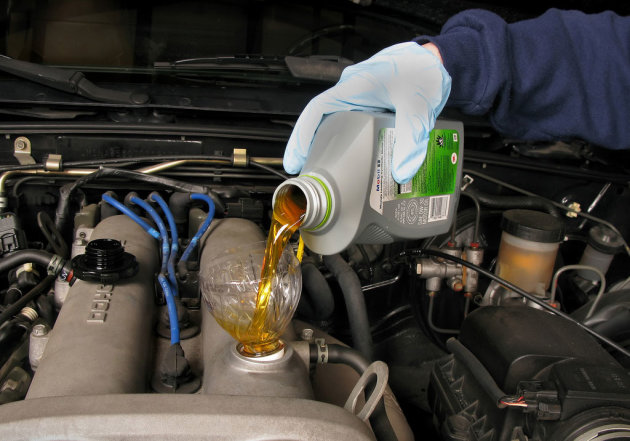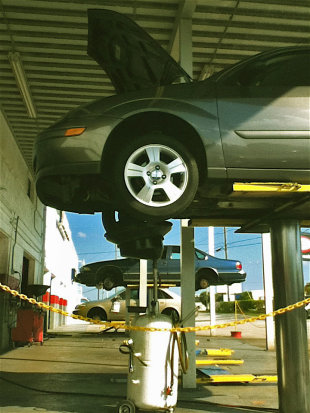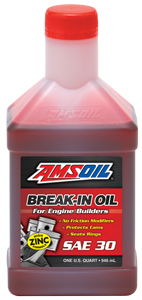
(Photo: Robert Couse-Baker/Flickr)
How often do you need an oil change?
Do you change your oil every 3,000 miles? The majority of drivers on the road have been bombarded by advertising that recommends changing their car’s oil every 3,000 miles, but the truth is that interval is no longer really necessary. Yes, engine oil does get dirty, and when that happens, it can clog engine parts, but if you’re driving a car that’s less than five years old, you’re probably wasting money — and oil — if you change it as frequently as that. Yes, knowing when to change oil is not as simple as some ad campaigns would have you believe. oil change
Changing the oil in your car every 3,000 miles was necessary in the 1970s, when most cars used 10W-40 oil, which tended to wear out within about 3,000 miles. Thanks to improvements in high-quality lubricants and tighter tolerances in the assembly of automotive engines, the 3,000-mile baseline simply does not apply to many cars on the road today; in fact, automakers now recommend you change oil at 5,000, 7,000, 10,000 or even as high as 15,000 miles for newer models under ideal driving conditions. For example, Toyota recommends you change oil at 5,000 miles for a 2005 Tacoma pickup, Honda recommends 7,500 miles for its 2002 Odyssey, General Motors suggests 7,500 miles for its 2007 Chevrolet Malibu, and Ford recommends 10,000 miles for its 2011 Fiesta. A 2008 Porsche Boxster can go 12,000 miles between changes, and a 2010 BMW 3 Series can go up to 15,000 miles before you change oil under ideal conditions; with this kind of complexity, it’s easy for consumers to be confused. oil change
How often do you need an oil change?
Almost 15 million Californians change their motor oil every 3,000 miles or more often, using more than 150 million gallons of motor oil each year – enough oil to fill 255 Olympic-sized swimming pools, according to a recent study by CalRecycle. CalRecycle spokesperson Jeff Danzinger says their studies indicate the state could reduce total motor oil consumption by as much as 10 million gallons per year if motorists were to change oil according to manufacturer recommendations. “If you’re changing your oil too soon, you’re needlessly creating waste oil and putting a strain on the system and supply,” Danzinger explains. oil change
 (Photo: JASON ANFINSEN/Flickr)And that’s just California — wonder how much oil is being wasted across the entire United States by people who have fallen victim to advertising and don’t follow the intervals recommended in their owner’s manual? Across the country, reprocessors treat about 1.1 billion gallons of used oil yearly according to the American Petroleum Institute (API).
(Photo: JASON ANFINSEN/Flickr)And that’s just California — wonder how much oil is being wasted across the entire United States by people who have fallen victim to advertising and don’t follow the intervals recommended in their owner’s manual? Across the country, reprocessors treat about 1.1 billion gallons of used oil yearly according to the American Petroleum Institute (API).
Unless you’re driving a car that’s more than ten years old, or under super extreme conditions, there’s really no reason to change your oil at 3000 miles anymore. Let’s put that amount into dollars: Changing motor oil according to manufacturer specifications would reduce motor oil demand in California by approximately 10 million gallons per year, and could halve the amount of money those drivers spend on oil changes, which average about $25 at quick-change facilities and can cost significantly more if your vehicle uses long-life synthetic oil. Under normal driving conditions, following the automaker’s recommended intervals will not affect your car’s engine, its performance, or your warranty.
What Is Considered Severe Use?
Severe use involves extensive idling or driving frequently in stop-and-go traffic; operating in cold temperatures below 10 degrees or extreme temperatures above 90 degrees; extreme humidity; repeated short-distance trips of less than five miles; towing a trailer or hauling heavy materials; or using E85 fuel more than 50 percent of the time. If you do drive in any one of these conditions in a typical week, you are driving in severe conditions, and may need to change oil more often.
What Happens if you Don’t Change Oil in Your Car?
How often do you need an oil change?
As Alina Tugend of the New York Times says, “It just gets dirtier and dirtier. It’s like mopping the floor with a bucket of water and detergent. The water starts out clean, but the more you use it, the filthier it gets. Eventually, you’re making the floor dirtier if you don’t change the water.” Dirty oil no longer lubricates properly, increasing friction, operating temperature, and causing the engine to wear faster.
Do You Know When to Change Oil?
Your vehicle’s owners manual will tell you how often you need to change your oil. If you drive a newer model, the car may just tell you when you need to change your oil. Since 2003, General Motors has equipped nearly its entire North American lineup with the GM Oil Life System; in fact, since the 2010 model year, nearly half of American carmakers now offer Oil Life Monitoring Systems to tell drivers when their car actually needs its oil changed, including Acura, BMW, General Motors, Honda, Mercedes-Benz, and Mini. These Oil Life Monitoring systems automatically monitor engine characteristics, driving habits, cold starts, short-distance trips, and the climate in which the vehicle is operated, and then notify the driver when it is time to get an engine oil change with an signal on the dash indicating it’s time for service.
If you are an extremely low-mileage driver you should change oil at least once a year. Otherwise, if your vehicle is equipped with an oil life monitoring system, you can trust the info/alert in your dashboard to tell you more accurately when you need a change. Don’t have an Oil Life Monitoring System? Consult your owner’s manual, your auto manufacturer’s official website, or authorized dealer for more information. Curious about your car right now but don’t have an owner’s manual handy? You can find suggested oil change intervals for many makes and models all the way back to the 2000 model year on the nifty widget at www.checkyournumber.org.
Tired Of Changing Your Oil Every 3,000 Miles?
Then trade in that beat-up 1970’s jalopy for something newer! Consider these new models that boast 10,000 to 15,000 oil change intervals:
All 2012 Audi models suggest you change oil at 10,000 miles
All 2012 BMW models suggest you change oil at 15,000 miles
2012 Ford Fiesta, Flex, Focus, and Mustang models suggest you change oil at 10,000 miles
All 2012 Jaguar models suggest you change oil at 10,000 miles
2012 Lincoln MKT and MKX models suggest you change oil at 10,000 miles
All 2012 Mercedes-Benz models suggest you change oil at 12,000 miles
All 2012 Mini Cooper models suggest you change oil at 12,000 miles
All 2012 Porsche models suggest you change oil at 10,000 miles, though some can go as far as 12,000 miles between oil changes
Nearly all 2012 Toyota models go 10,000 miles between oil changes
All Volkswagen models can go 10,000 miles between oil changes


 (Photo: JASON ANFINSEN/Flickr)
(Photo: JASON ANFINSEN/Flickr)




